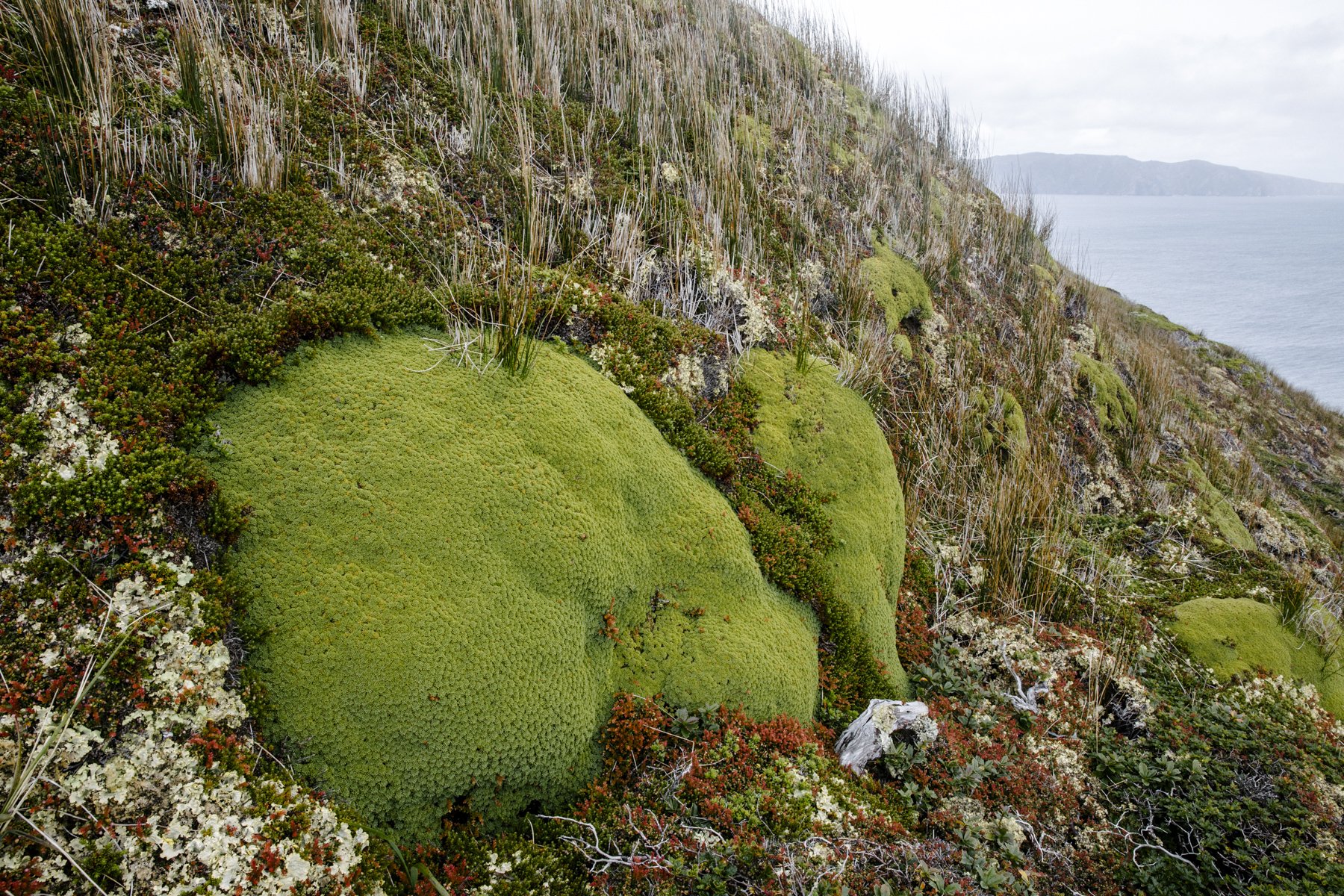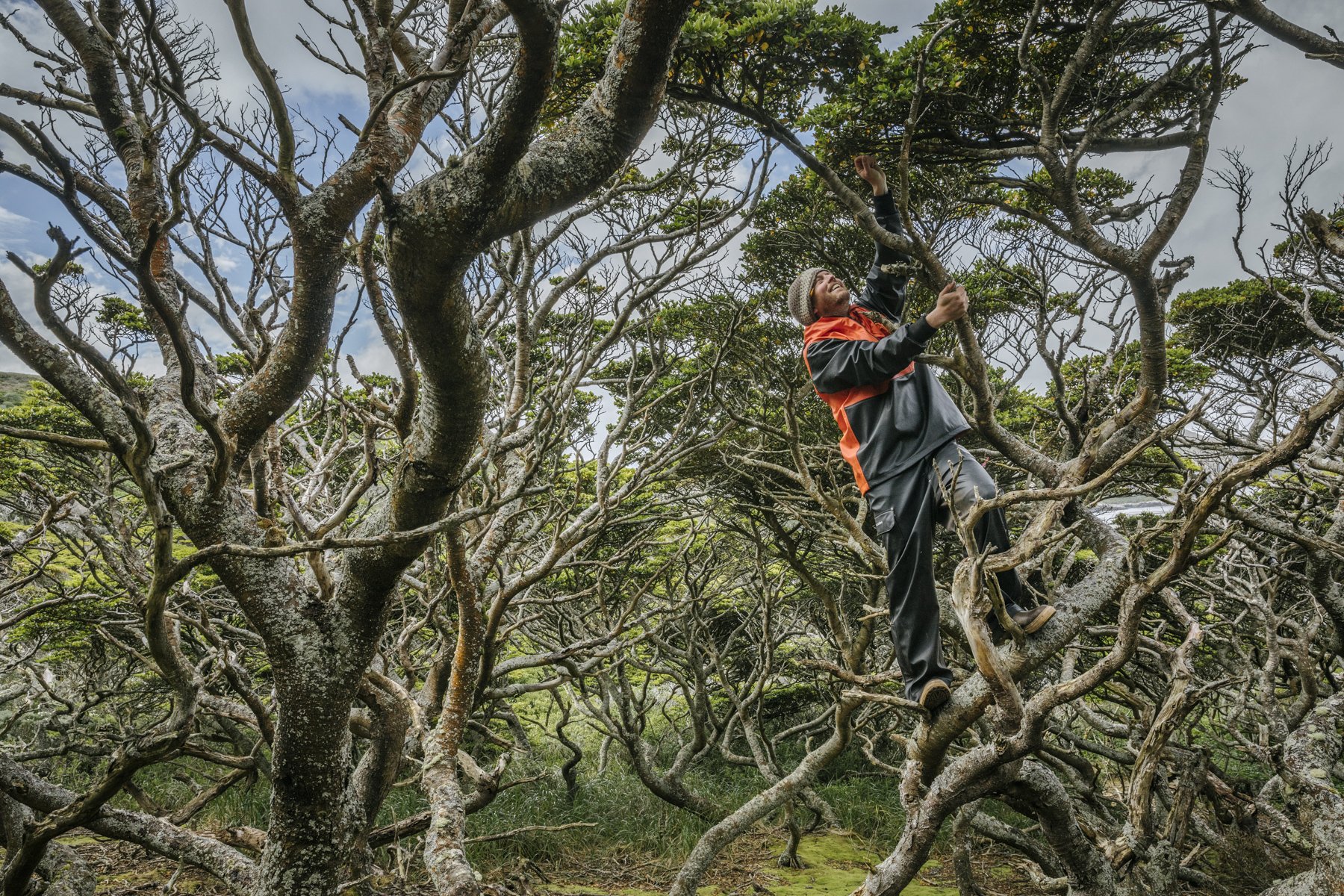Facing into the wind, Isla Hornos, Chile. Photo: Ian Teh
The southernmost tree | the southernmost people
Cape Horn, and the Cape Horn archipelago, is a land defined more by air and water than by soil and rock. The wind courses overhead ceaselessly. Gusting is the wrong word, because that implies breaks between the gusts - no, it feels more like being a bug on the bottom of a fast flowing, whitewater creek. Eddies and pulses finger any exposed edges, threatening to pull you up and off and into the rushing torrent. Walking is dangerous because it implies being upright. Tents are an affront to nature, and must be flattened.
My team went to this utmost southern point - no land left, nothing but the Drake Passage (the most deadly stretch of water on the planet) and Antarctica - to find the worlds’ southernmost tree and search for signs of humanity. Could humans survive this far south without the benefits of fossil fuels? Could we, as a species, live here? Nobody had explored that edge yet - for good reason.
After 15 foot seas, many days of hurricane force winds, and sleet that felt like being hit with buckshot, we surveyed the island. We found the southernmost tree in the world - the last one - a diminutive Magellans’ beech - and we found, new to the world, the southernmost archaeological site and evidence of human occupation ever discovered. Buried under a penguin colony was evidence of hunting; butchered bones, charcoal, and two harpoon points. We were here, a long time ago.
The site belongs to the Yaghan culture, likely about 500 years ago. Whether it was a permanent site or a short-term hunting colony is unknown, as we only had about a day after the discovery before we had to evacuate to avoid another hurricane. But it was certainly human.
Think about this: Cape Horn is now known as the furthest humanity ever expanded out of Africa, prior to the industrial revolution. This is the limit of natural human expansion. We made it ALL THE WAY to the end of the world, from Africa, through Asia, through Siberia and across the Bering Strait, then down the Americas, through the deserts and rainforests and more deserts to the glacial fjords of Tierra del Fuego.
What a journey. And there’s more to explore.













Photos above from: Ian Teh, John Harley, Brian Buma, Andres Holz
People
Brian Buma, Lead
Andres Holz
Ricardo Rozzi
Flavia Morello
Craig Welch
John Harley
Ian Teh
Ivan Diaz
There are actually too many to name - the crew of the Oveja Negra, the Chilean science support team, the Chilean Navy, and many, many others.
Selected Content
The tree at the bottom of the world: National Geographic Magazine. Craig Welch.
Ian Teh Photography: Expedition photographer and Pulitzer grantee
Buma B, Morello F, Rodriguez K, Serrano Fillol A. 2022. The southernmost end point of pre-industrial human expansion found on Isla Hornos (Isla Lököshpi), Chile. Antiquity.
Nature research highlight: Bows and weapons show just how far south pre-industrial humans got.
Buma B, Holz A, Diaz I, Rozzi R. 2021. The world’s southernmost tree and global southern treeline. Ecography. 44(1):14-24.
PBS Newshour and The Conversation: The southernmost tree